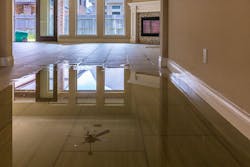Markets With Extreme Weather Are Only Affordable to the Wealthy
Miami Beach resident Curt Dyer says he’s spent nearly $250,000 in renovations to make his home more resilient to flooding, something that impacts the 30-year resident almost daily. But it’s not enough to keep him away. He’s one of many homeowners in a flood-prone zone who can afford to stay and retrofit his home for extreme weather. Dyer’s renovations include raising the driveway, his guest bedroom and bath, along with kitchen cabinet upgrades. A Tulane University associate professor of real estate told CNBC that these resiliency fixes create a “game of musical chairs” with home equity.
As long as homeowners like Dyer are able to sell their property at a higher price after resiliency investments, they come out on top. Eventually, however, a homeowner or bank could end up losing everything if a flood or other disaster destroys the house and makes the property unlivable. Over time, this risk will increase insurance rates and make it harder to get mortgages.
“We anticipate a rapid decline in valuation,” Keenan told CNBC. “Only the wealthy can afford to live, for instance, in high-risk coastal areas, because everybody else can’t insure it and won’t be able to get a mortgage.”
In fact, homes exposed to sea level rise sell for about 7% less than their unexposed counterparts, according to a study published in 2019 in the Journal of Financial Economics. That discount jumps to 10% when the owner of the property is not living there.
Flooding is the most common and most expensive natural disaster in the U.S., according to FEMA. Ninety percent of all natural disasters in the U.S. involve flooding and just 1 inch of water can cause $25,000 of damage to a home.
